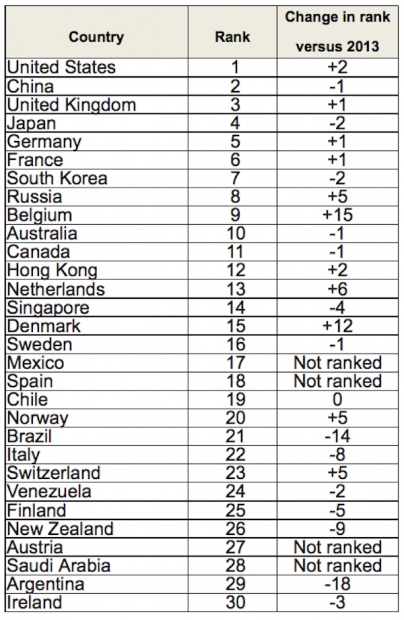 Global online sales grew 20 per cent worldwide in 2014, to nearly $1.4 trillion, with Australia remaining in the top 10 for e-commerce sales, according to the 2015 Global Retail E-Commerce Index released by A.T. Kearney.
Global online sales grew 20 per cent worldwide in 2014, to nearly $1.4 trillion, with Australia remaining in the top 10 for e-commerce sales, according to the 2015 Global Retail E-Commerce Index released by A.T. Kearney.
Australia grew by nine per cent last year, with strong performance in department and variety stores (33 per cent of sales), homewares and appliances (17 per cent), and groceries and liquor (15 per cent), according to estimates by NAB.
Aussies aged 35 to 44 are the biggest spenders, accounting for a quarter of dollars spent online.
Retailers such as JB Hi-Fi increasingly see the online channel as an extension of their brick and mortar presence. Online sales were up 13.9 per cent in FY14 for the consumer electronics retailer. So far, Australia has punched above its weight in retail e-commerce, thanks to its sound financial, logistical, and telecom infrastructure.
Benoit Nachtergaele, principal in A.T. Kearney’s Consumer Products and Retail practice in Australia said for incumbents like department stores, strengthening e-commerce is more of a defensive than an offensive move as they face declining sales in their stores and are adapting to the shift in shopping behavior.
Overarching themes in the study relate to business strategy, customers, and channels including: Internationalization; the rise of e-commerce IPOs; the continuously connected consumer; and the need for omni-channel strategies.
The report also includes detailed market spotlights on China (sendond), Belgium (ninth), Mexico (17th), Spain (18th) and Brazil (21st).
Mike Moriarty, A.T. Kearney partner and co-author of the study said the boom in e-commerce has brought challenges.
“Both brick and mortar leaders and major pureplay online retailers are learning that the future of the industry is not merely online, but rather in creative omni-channel offerings that link online and physical shopping.”
The Asia Pacific e-commerce market continues to grow and will soon be the world’s largest region in terms of online sales, but many Asian countries declined in this year’s Index.
China, the previous leader, has seen its e-commerce market continue to expand, but it declined due to slightly weaker e-commerce growth and questions about its longer term macroeconomic conditions, particularly regarding infrastructure investment and consumer spending.
Mexico jumped into the rankings at 17th place, while Brazil and Argentina fall steeply in the Index, due to their slowing macroeconomics. Fundamental infrastructure challenges – logistics and transportation in Brazil, government regulations in Argentina – may hinder e-commerce growth in the future.
In Europe, the United Kingdom (third), Germany (fifth), and France (sixth) all move up one spot in the Index, while Belgium (a 15 spot rise to 9th place), Denmark (up 12 spots to 15th) and Spain (entering the rankings in 18th) have posted progress.
The Global Retail E-Commerce Index is a ranking of the top 30 countries based on nine variables, including select macroeconomic factors as well as those that examine consumer adoption of technology, shopping behaviors, infrastructure, and retail-specific activities. The Index balances current online retail market indicators with those that predict the potential for future growth.






